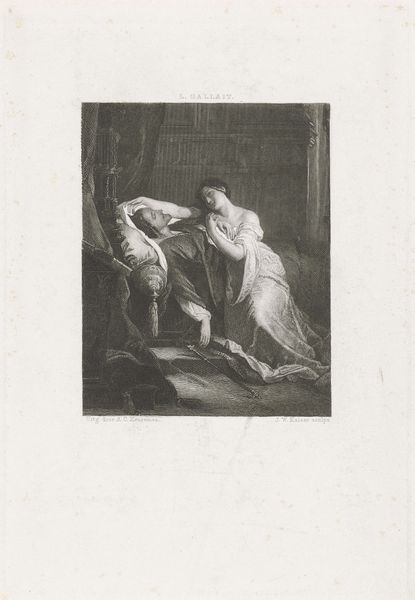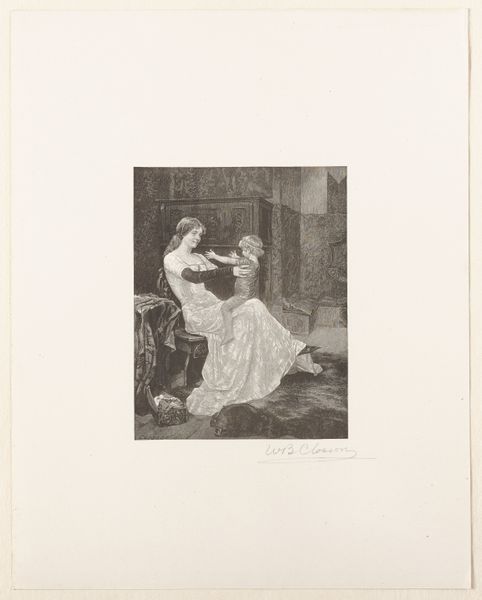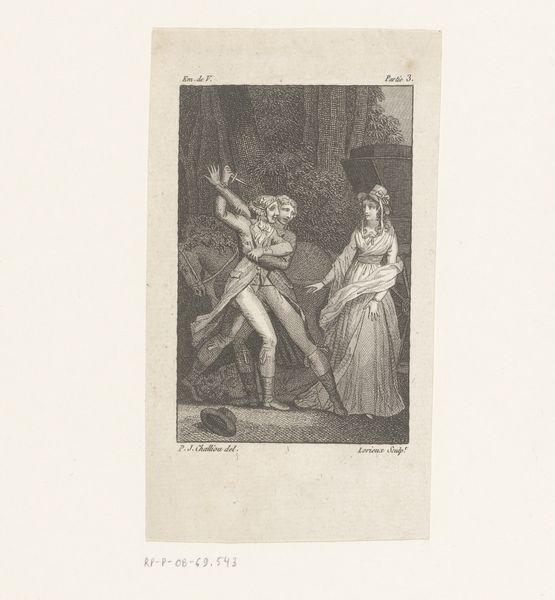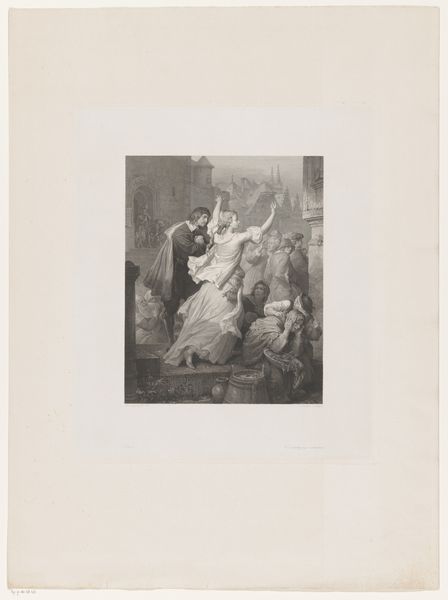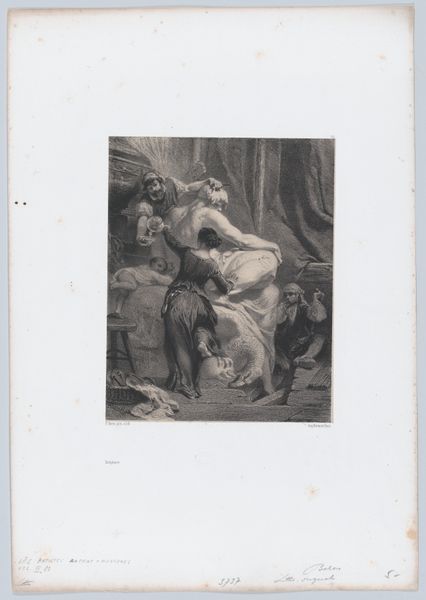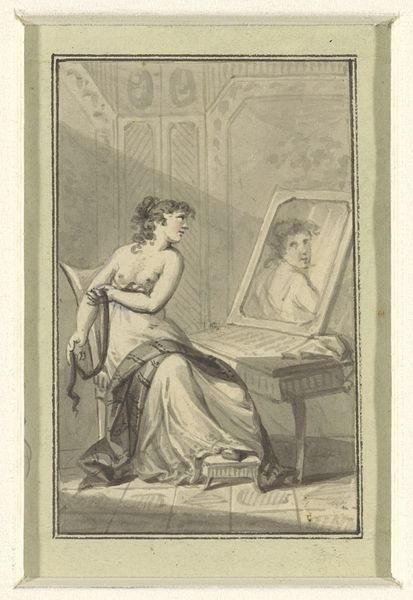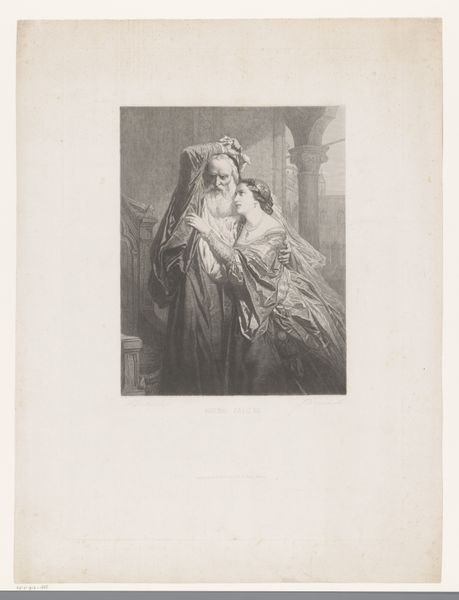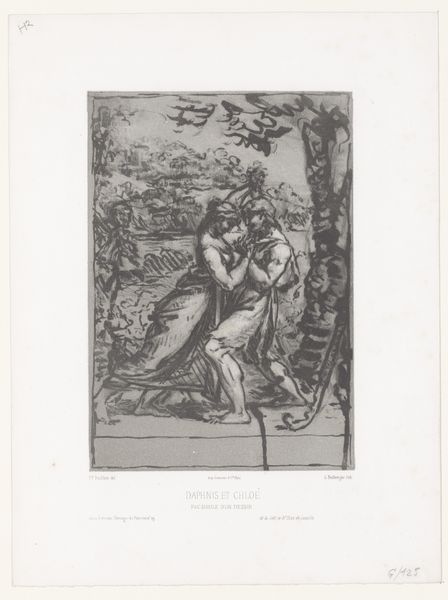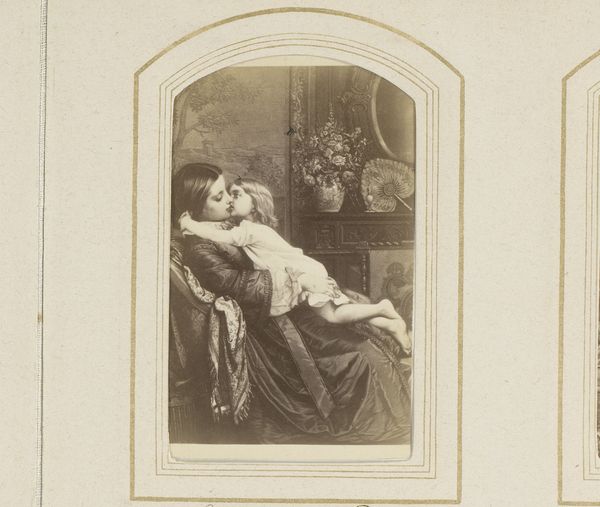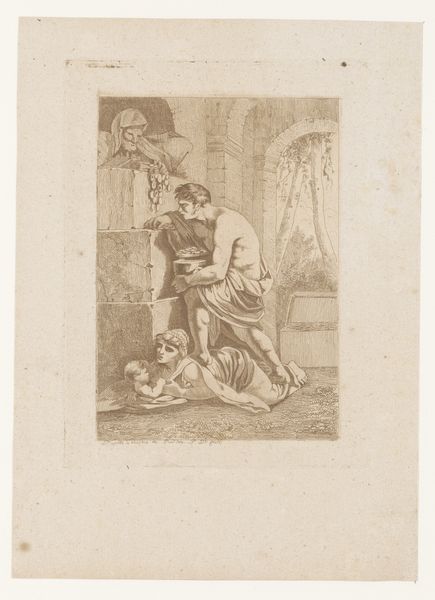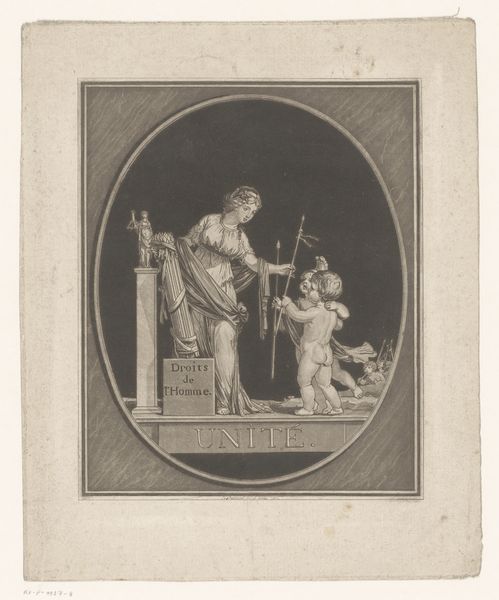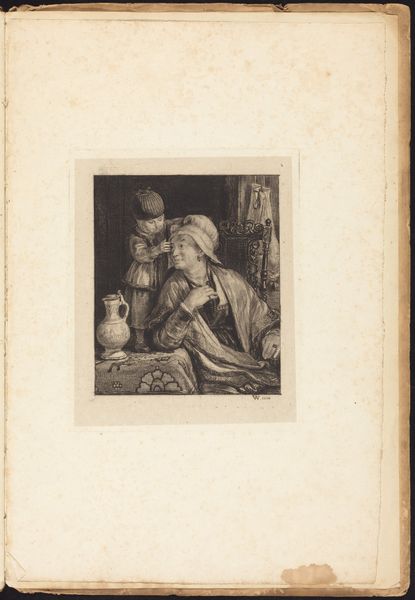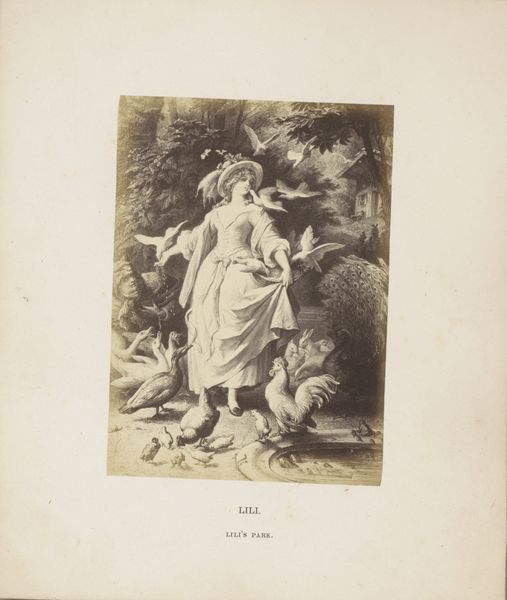
Fotoreproductie van een tekening naar het schilderij Jeanne la Folle door Louis Gallait before 1863
0:00
0:00
print, photography
#
narrative-art
# print
#
photography
#
history-painting
#
academic-art
Dimensions: height 355 mm, width 281 mm
Copyright: Rijks Museum: Open Domain
Editor: This is a photomechanical print of a drawing, after the painting "Jeanne la Folle" by Louis Gallait, and it was created sometime before 1863 by Edmond Fierlants. The scene is incredibly somber. I'm struck by the way the artist has arranged the figures in this intimate setting and the details of light and shadow. How would you interpret the composition? Curator: Let us observe how the artist structures the scene. The eye is immediately drawn to the interplay of light and dark, a clear chiaroscuro. Notice how the stark white dress of the woman contrasts sharply with the somber, darker tones of the background. This highlights her figure, placing her in the foreground, making her almost luminous. Then, examine the relationship of the figures – the rigid horizontal of the deceased and the angled form of the living woman, creating visual tension and communicating distress. Do you observe other formal tensions at play? Editor: I see that the textures are distinct despite the grayscale print – the soft draping fabric of the dress versus the ornate carvings of the bed frame and the cold, hard helmet resting nearby. How does this contribute to your formal reading of the image? Curator: Indeed. The artist carefully juxtaposes these textures. We should be mindful of how this manipulation guides the viewer’s experience. Through these contrasting textures, Gallait via Fierlants perhaps underscores a key aspect of human condition that speaks to both delicacy and brutal strength. Light and texture create a hierarchy, leading us to question the underlying power structures in play, wouldn’t you agree? Editor: I think that’s a compelling reading of the work. I appreciate how focusing on form helps unlock these interpretations! Curator: Agreed, and by analyzing the artistic elements—form, light, and composition—one arrives at a much more informed understanding.
Comments
No comments
Be the first to comment and join the conversation on the ultimate creative platform.
